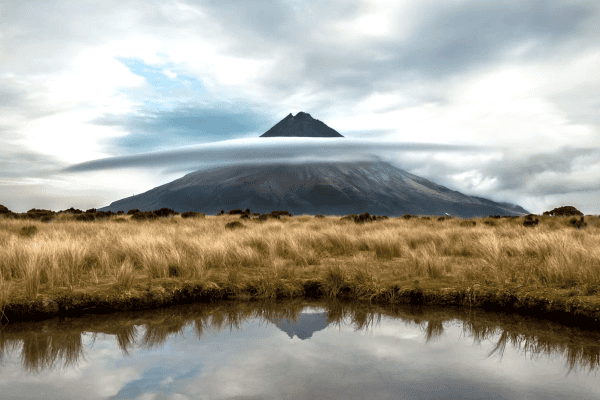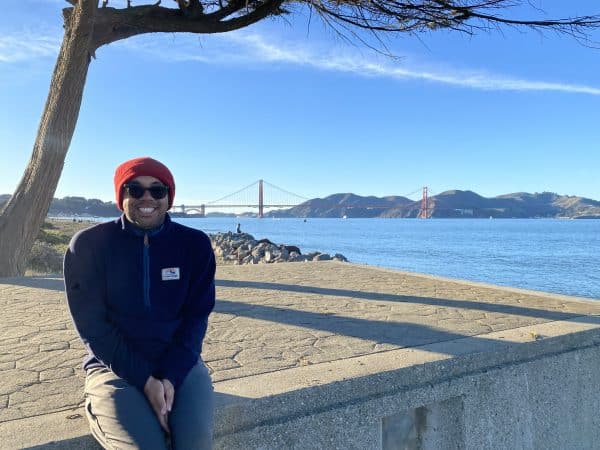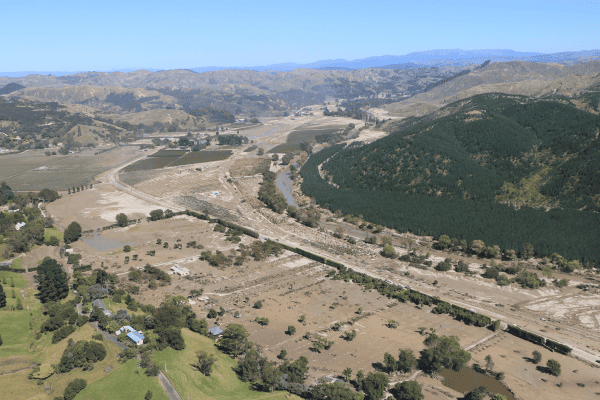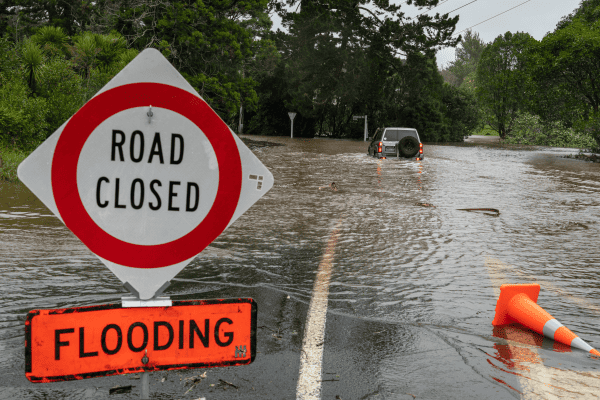Reclaiming Māori oral histories to understand tsunami hazard and history
27/08/2018
Kei roto i ngā kōrero tuku iho ā-waha a te Māori e takoto ana ētahi kōrero nunui mo ngā ākitanga mai o ngā ngaru taupoki nunui o Aotearoa. I heke mai ēnei kōrero i ngā wāhi katoa ā-kōrero, ā-pakeke whakakitenga, e whakaara mai ana i ngā āhuatanga i taupokina ai te whenua e ēnei momo ngāru taupoki nunui hai tohu i a tātau kia āta manaaki, waihanga i te taiao i nāianei, hai ngā tau e heke mai nei kei whīua tātau e ngā ngaru taupoki nunui kino nei.
Ko ngā kairangahau o Kia Manawaroa, Ngā Ākina Te Au Tūroa tūhono ki te mātauranga Māori kua tīmata ki te rangahau i aua korero tuku iho nei tapaia nei He Kōrero Whakataratara, kia hererea ngā kōrero tuku iho nei mo ēnei āhuatanga o ngā ngaru taupoki nunui kino o Aotearoa i tau atu ki runga o Rangitoto motu (D’Urville Island). Ko aua momo kōrero, He Kōrero Whakataratara The Rival Wizards he mea tuhituhi, i whakapukapukatia i te tau 1907 e te Pākehā nei a Alfred Grace (1867 to 1942), he kairangahau kohikohinga kōrero ia.
Kei roto i te kōrero nei He Kōrero Whakataratara; nā Te Pou he rangatira o taua wā i whakaara i tono kia ākina, kia whīua a Titipa tana hoariri e ngā ngaru taupoki nunui kino nei he kore no Titipa e aro nui atu ki ngā whakahau a Te Pou. Ko ēnei ngaru taupoki nunui kino e kōrerotia ana e tukituki ana i ngā tātahi, onepū kia pākarukaru, pakaru katoa te whenua. E ai ki ngā kairangahau ko ngā momo kōrero mo aua ngaru taupoki nunui nei, ōrite tonu ki ngā kōrero, ngā whakamārama o ngā ngaru taupoki nunui e kitea ana i ēnei rā e te hunga i waimarie te ora mōrehu mai i aua ngaru taupoki nunui kikino nei.

Hai whakatinana i ēnei momo kōrero, whakakitenga ka whakaritea e ngā kairangahau kia uiuitia kia 20 tāngata o Ngāti Koata me Ngāti Kuia he hono o ēnei iwi ki te pito tokerau o Te Wai Pounamu kai reira nei te motu o Rangitoto. I roto i ngā uiui nei ko te mea nui i whāia e ngā kairangahau kia mau ki te kōrero o taua ngaru taupoki nunui, kia kaua e tirohia pēnei i tā te kōrero pūrākau whakakitenga. I āta rangahautia e ngā kairangahau kia pono te takoto mai o te kōrero, kia wherawhera tikahia aua kōrero kia kaua e noho hai kōrero whakawhitiwhiti pūrākau tōna whakaritenga, kia mau ko te ia tika o te kōrero pono.
Ko ngā tāngata o Ngāti Koata me Ngāti Kuia i uiuitia he mea tuku atu he tuhinga o te Kōrero Whakataratara The Rival Wizards i mua i te uiuitanga, haere nei te rangahau ko ia tangata i uiuitia, e kī tonu ana kāore rātau i kite i tēnei tuhinga Kōrero Whakataratara i mua i te whakahaeretanga o te uiui rangahau nei. Ahakoa anō tēnei i te mārama ngā tāngata i uiuitia ki ngā āhuatanga whakatakoto, whakahau kōrero o te ia o ēnei momo Kōrero Whakataratara. Āua atu e mōhiotia ana a Karepa Te Whetu nāna i tuku, i kōrero atu tēnei kōrero ki a Alfred Grace. Whakaae katoa ngā tāngata i uiuitia ko Karepa Te Whetu e noho ana ki runga o te motu o Rangitoto (D’Urville Island) i taua wā ā, ko ia te tama mātāmua a Te Whetu, he rangatira nui a Te Whetu o taua wā o Ngāti Koata. Ko te nuinga o ngā tāngata i uiuitia i kī tonu iho kāre rātau i te mōhio mo te Kōrero Whakataratara o The Rival Wizards i te mea hoki kua matemate katoa ngā tāngata o taua whakatipuranga, ā, kua hūnuku rānei te hunga i pakeke mai ki runga i te motu o Rangitoto, ngaro atu hoki ki a rātau aua momo Kōrero Whakataratara. Haunga anō ko te tino whakaritenga o tēnei rangahau e kī ana tērā kai roto i aua momo Kōrero Whakataratara ngā kōrero mo aua ngaru taupoki nunui tūkino o Aotearoa haere ake nei. Me aro tonu ki aua momo kohinga kōrero kia mārama ai tātau i nāianei, kia noho tūpato, kia kaha te kairangahau ki te wherawhera i ngā kōrero mo aua ngaru taupoki nunui tūkino nei kia noho reri te hunga kei te taha moana e noho ana.
Māori oral histories provide a rich source of understanding and information about past tsunamis in Aotearoa-New Zealand. They draw from multiple layers of experience and meaning, helping to recall the past as well as remind us about environmental risks in the present and future.
Researchers from the Resilience to Nature’s Challenges Mātauranga Māori programme have recently delved into a ‘folk tale’ called The Rival Wizards to explore the inclusion of Māori ancestral experience with tsunami(s) on Rangitoto (D’Urville Island). The Rival Wizards is one of a number of Māori ‘folk tales’ published in 1907 by the European ethnographer Alfred Grace (1867 – 1942). In the story [hereafter pūrākau], the ‘wizard-chief’, Te Pou, summoned three great waves to extract retribution on his rival Titipa for defying him. These great waves were described, including how they struck and scoured the shores. According to the researchers the descriptive language is similar to that used by modern-day tsunami survivors.
To affirm the inclusion of tsunami narratives within the pūrākau, researchers conducted interviews with 20 key informants from Ngāti Koata and Ngāti Kuia. These informants hold deep connections with the top of the South Island (where Rangitoto is located). The researchers were careful to ensure their analysis focussed on emphasising the participant’s views, rather than the meaning they themselves brought to the research. They wanted to avoid subjecting the pūrākau to any external judgements and risk turning it into something it was not.
Ngāti Koata and Ngāti Kuia interviewees were given a written copy of The Rival Wizards before their interview, and upon questioning each person revealed that they did not know the pūrākau prior to the study. However, the informants were familiar with many of the elements and storytelling devices contained in the pūrākau. There was also widespread awareness of Karepa Te Whetu who told the pūrākau to Alfred Grace. All informants agreed that Karepa Te Whetu lived on Rangitoto, and was the elder son of Te Whetu, a respected Ngāti Koata leader. Many of the informants considered that the reason they did not specifically know aboutThe Rival Wizardswas due to whānau having passed on or moving away from the island, taking many of their stories with them.
Informants from both Ngāti Koata and Ngāti Kuia spoke at length about the likelihood that the pūrākau derived from Rangitoto. The names and descriptions of locations were considered as well as common references to incantation and shapeshifting which were regarded as highly relevant to any claims of the narrative coming from the northern South Island. Further still, most of the Ngāti Kuia informants recognised the names of the main characters in the pūrākau, such as Rongomai, Te Pou and Titipa. One respondent said that Te Pou was his father’s middle name, and that “every Peter is a Pou” in Ngati Kuia.
At the end of The Rival Wizards Te Pou calls forth three catastrophic waves, which almost all informants agreed most likely referred to direct experience with one or multiple past tsunamis. However, they did not know exactly where or when this happened. Thinking about the great waves described in the pūrākau also led several of the informants to note similarities with another pūrākau from Moawhitu (Greville Harbour) on the western side of Rangitoto. In this alternative narrative, a tsunami possibly occurring in the 1400s or 1500s drowned nearly everyone living in the area, and their bodies now lie in the surrounding sand dunes. This catastrophic inundation may be the same one described in The Rival Wizards.
By working directly with Ngāti Koata and Ngāti Kuia it is clear that there is a deep familiarity with the different elements of The Rival Wizards, including knowledge of a past tsunami (and possibly multiple events) on and surrounding Rangitoto. The importance of taking such stories ‘home’ to the community and family groups where they were originally told was also made clear through this research. It emphasises not only the critical role of whakapapa [ancestral lineage, genealogy] in framing and comprehending the context of such narratives, but it also recognises the authority of kin groups such as Ngāti Koata and Ngāti Kuia, to reclaim and affirm their histories in their own words. This on-going work has the potential to contribute to the production of ‘new’ plural narratives about tsunami disturbance, recurrence and risk around Aotearoa-New Zealand’s coast.
To access the full research article please see: https://doi.org/10.5194/nhess-18-907-2018



